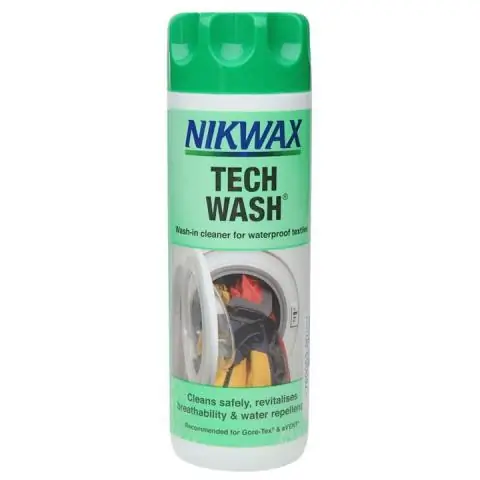
Table of contents:
- Parquet: features of the coating and rules for caring for it
- Parquet and its features
- The main enemies of parquet flooring
- Competent care of natural wood parquet at home
- Typical damage to parquet and DIY remedies
- Prevention and protection against mechanical damage, how to maintain an aesthetic appearance
- Author Bailey Albertson [email protected].
- Public 2024-01-17 22:26.
- Last modified 2025-06-01 07:32.
Parquet: features of the coating and rules for caring for it

Parquet is one of the most beautiful natural floor coverings. The wood texture gives the home a touch of luxury and aristocracy. However, the impeccable appearance of the parquet is largely due to the correct care of it and the observance of all the rules of its operation.
Content
-
1 Parquet and its features
-
1.1 Varieties of parquet
- 1.1.1 Piece
- 1.1.2 Mosaic
- 1.1.3 Shield
- 1.1.4 Artistic
- 1.1.5 Massive
- 1.1.6 Parquet board
- 1.1.7 Pronto parquet
- 1.2 Features of the operation of parquet flooring of all types and with different types of coating or impregnation
- 1.3 Influence on microclimate coating. Features in winter and summer seasons
-
-
2 The main enemies of parquet flooring
- 2.1 Water
- 2.2 Animals
- 2.3 Furniture
- 2.4 Shoes with iron heels and stiletto heels
- 2.5 Dust, dirt, sand and irregular cleaning
-
3 Competent care of natural wood parquet at home
- 3.1 Caring for wax or oil-impregnated parquet floors
- 3.2 How to care for lacquered parquet floors
-
3.3 How to remove stains from it
3.3.1 Folk methods of removing stains on the floor
- 3.4 Features of caring for the old
- 3.5 How to restore old parquet - video
- 3.6 Cleaning and cleaning products for parquet floors and how often they should be used
-
4 Typical damage to parquet and DIY remedies
- 4.1 Color change
- 4.2 Discoloration and staining
- 4.3 Cracking
- 4.4 The occurrence of undulating cracks
- 4.5 Swelling of planks
- 4.6 Too tight tongue and groove
- 4.7 How to repair parquet with your own hands in different situations - video
- 5 Prevention and protection against mechanical damage, how to maintain aesthetic appearance
Parquet and its features
The name of this floor covering comes from the French word parquet and means a floor made up of many planks made of hardwood in a pattern.

This flooring will brighten up any room
Varieties of parquet
Piece
One of the most common types. It is a covering of strips with ridges (spikes) and grooves. When these elements are connected into a lock, a one-piece structure is formed. The rivets can be up to 50 cm long, up to 7.5 cm wide, and the thickness ranges from 15-22 mm. The design of this coating allows it to be repaired frequently, however, due to the coupling system, it will be necessary to disassemble the entire coating from the wall to the damaged fragment.
Mosaic
This type of floor, also called inlaid, consists of shields, in which there is a set of strips of various shades. The dimensions of the shields are 600 by 600 or 400 by 400 mm. The rivets are up to 8-12 mm thick. When finished, the flooring looks like a mosaic or even a certain image. The absence of ridges and grooves makes it possible to remove and replace only the damaged board, however, before laying a new one, the base should be carefully leveled so that it does not knock out of the common plane.

One of the most common types of parquet
Shieldova
It consists of two layers. The lower one is a square slab made of fiberboard or planks, while the upper side is made up of miniature planks made of durable wood of various species. The dimensions of the shield can be 80 by 80 cm, and its thickness ranges from 15 to 30 mm. A common problem with such a floor is peeling of wooden planks from the board, although this can be solved by the usual gluing of lamellas. The pattern of such a coating is mainly squares and their variations. Sometimes the drawing is made to order.
Art
One of the most expensive coatings, also called palace coatings. It is distinguished by many exquisite interweaving of patterns and curved lines, and it is mounted mainly on a large area of the room so that the drawing is noticeable and not hidden under furniture. For the manufacture of artistic parquet, precise measurements are required, and parquet planks are most often made to order from several types of wood (up to several dozen). To select the materials for this parquet, you need to be an experienced specialist so that the jumps in humidity and temperature changes that affect different levels in different ways do not destroy the entire structure. When caring for such a floor, in no case should fluctuations in humidity and temperature be allowed, otherwise deformed planks from one type of wood will destroy rivets from another wood.

Only kings could afford such sex before
Massive
Each plank of such a floor is a cut of the solid wood of valuable varieties of wood. The rivets are connected by a system of grooves and spikes (ridges), which makes this parquet an analogue of type-setting, but on an enlarged scale. Its boards can be more than one meter long, reach at least 8 cm in width, and from 1.5 cm in thickness. Due to the large size of the lamellas, it is quite difficult to replace it on your own.
Parquet board
This coating is called three-layer because it is made from 3 layers of natural wood. Moreover, their fibers are located transversely, which makes it possible for them to easily respond to temperature fluctuations and drops in moisture level. The upper part (it can include 3-4 planks or be whole) is made of strong wood of valuable varieties, the middle, thickest layer is a plank of conifers, and the lower one is plywood, also from conifers. Usually such a coating is varnished during production. The most resistant to moisture and it is easy to recover after exposure.
Pronto parquet
This is the name of a multi-layer piece floor covering. It is made from high-strength and valuable types of wood (mahogany, oak, etc.). It is made for a long time (up to seven months). This is due to various types of processing designed to make it stronger. The big advantage of this type of coating is the possibility of multiple grinding. But if it is necessary to partially replace the coating, it is difficult to find rivets of the desired shade.
Features of the operation of parquet flooring of all types and with different types of coating or impregnation
- Normal use of parquet flooring means that the room is maintained at a temperature of 20 to 24 o C, and the relative humidity ranges from 45 to 60%.
- It is advisable not to move on the surface in shoes with heels or heels, since they cause scratches. Mechanical damage does not depend on the type of parquet, however, on a parquet covered with varnish, scratches will remain noticeable until they are repaired, but on a coating soaked in oil or wax, defects will soon cease to stand out, because will swim with impregnation;
- The surface needs careful maintenance and constant preventive measures;
- Protect the parquet from sudden changes in temperature and humidity;
- If it is necessary to repair or restore the parquet, it is cycled and recoated with varnish and oil or wax.
Influence on the microclimate coating. Features in winter and summer seasons
The condition of this natural wood flooring can be influenced by the following factors, on which the microclimate in the room depends:
-
strong cooling of the air in the dwelling: up to -10 o C. It is dangerous because when the heating is turned on or simply heating the room, condensation is released, which is harmful to parquet, like any moisture;
too high temperature for a long time (from 30 to C or higher);
increased air temperature without ventilation, in particular, overheating of the room with different heaters;
- repair and decoration works that cause an increase in the level of humidity or other changes in the microclimate (painting surfaces, plastering) can cause deformation of the strips, their swelling and delamination;
- constant and very strong changes in temperature and humidity;
- high air humidity, for example, due to the availability of irrigation systems for whimsical plants grown indoors.
In the hot season, when the humidity rises from 60% and above, the parquet rivets expand. For this reason, putty and varnish are squeezed out of the gaps between them, and the edges of the boards are slightly raised.
In winter, at low humidity - up to 45% - the rivets begin to shrink and cracks appear.
The only thing that can protect the parquet from the influence of fluctuations in humidity and temperature in winter and summer is the installation of a hygroroscope and a thermometer in the room, as well as the use of a split system to control the microclimate and stabilize it.
The main enemies of parquet flooring
Water
The key factor damaging this surface is moisture in all its forms - on the floor itself and in the air. Any liquid that gets on the floor should be immediately soaked with a cloth, and the washing vacuum cleaner should not be used under any circumstances.
Animals
The nails on the paws of dogs and cats can leave deep scratches on the surface, so they should be trimmed regularly.

Pets can scratch hard parquet
Furniture
Its feet are also capable of scratching the parquet flooring when moved.
Shoes with iron heels and stiletto heels
They leave deep marks on the parquet floor.
Dustiness, dirt, sand and irregular cleaning
All these factors severely damage the surface of the coating, peeling off varnish, wax and discoloring the parquet. After such a complete restoration of the floor will be required.
Competent care of natural wood parquet at home
The care of natural parquet flooring will vary significantly depending on many factors.
Caring for parquet with wax or oil impregnation
Oil-impregnated parquet is ideally protected from moisture and dirt, but the protective foil is still not completely impervious. True, the resulting damage can be easily sanded in a small area without reconstruction of the entire coating.
- The oily coating can be cleaned by damp cleaning using special parquet cleaners.
- Detergents should be previously diluted in water according to the instructions, and then the parquet should be washed with a wet and thoroughly wrung out cloth.
- When cleaning, care should be taken that the coating does not become too wet, because over time, oversaturation with water can ruin the parquet.
- The first 8-10 days of use, such a floor is swept only with a soft brush or rubbed with a dry cloth. After this period, it can be swept, vacuumed, wiped with a mop equipped with a fur attachment or a sponge.
As for wet cleaning, they do it with water, in which a special liquid agent based on vegetable oil is diluted. They also use care products consisting of essential substances, vegetable oils and water. After damp mopping, the floor is polished with a woolen cloth, or ideally with a single-disc polisher. Without this procedure, stains of a darker or lighter shade than the basic tone of the coating will remain on the parquet, and it can also fade. By the way, felt slippers put on your feet are an easy way to polish at home. Wet cleaning of oil parquet is carried out only when necessary - when a large area of the floor is dirty. Once a month, for shine, the coating is rubbed with an oil-based care product or oil mastic, after which it is polished with the already mentioned machine.
Everything you need for optimal maintenance of oily and waxed parquet floors
-

Mop-mop - The fur nozzle gently cleans the parquet floor
-

Monodisc polishing machine - Polishes the coating after being impregnated with oil or wax
-

Care set - Cleanse, restore, refresh the color of the parquet
-

Special vacuum cleaner - Allows you to make the parquet perfectly clean without damaging it
Wax-coated parquet board is not washed, but only treated with specialized detergents. It can be cleaned with any dry cleaning options, specialized shampoos or a cleaner for this type of coating. Any moistening of such a floor may cause stains and shine. If soap solutions or abrasive detergents come into contact with the waxed floor, the color of the parquet will change due to the alkaline reaction.
Every 2-3 years, an oiled or waxed floor is re-impregnated or over an existing layer with the appropriate substances. It is advisable to entrust this work to specialists, since they have all the necessary equipment and experience. After that, the coating is polished with a monodisc polishing machine with a pad (buffer pad). After 4 hours, you can begin to carefully use the floor - walk on it without shoes, but heavy furniture - cabinets, sofas, etc. - do not return to the place yet. But only after a week, the coating will finally dry out.
How to care for lacquered parquet floors
The main task when caring for such parquet is to preserve the varnish layer and eliminate dirt. For daily cleaning, the parquet is vacuumed or swept with a soft brush. It is advisable to use a vacuum cleaner designed specifically for this coating. Such cleaning devices have soft nozzles made of felt or horsehair for dry cleaning or special nozzles and sprayers for wet cleaning. Similar vacuum cleaners are manufactured by Thomas, Pro-aqua, etc.
To clean the parquet flooring, it is strictly forbidden to use a washing vacuum cleaner, water with a temperature above 50 ° C, bleach, powder and abrasive cleaning agents
It is advisable to wash the parquet weekly, but only with three types of special cleaning agents:
- sprays (applied to the surface, after which it is wiped with microfiber napkins);
- concentrates (diluted in water);
- ready-made products (a mop or rag is soaked in them, after which it is well wrung out).
The difference between these means lies only in their form - everyone chooses a more convenient form for him personally. The neutral chemical formula of the preparations allows you to keep the surface in perfect condition. If an oily stain appears, try wiping it off with a soft cloth. If it does not help, use turpentine, but only pointwise. It should be noted that every 5-7 years the parquet should be re-grinded and varnished. This preserves the color of the coating and protects it from water. Every month and a half, special polishes are applied to the floor to prevent deformation of wooden planks and protect from moisture. If the varnish has worn off in a small area, it is immediately covered with a spray varnish.
When cleaning debris, it is first swept away with a broom or a soft brush, then vacuumed and washed with the use of specialized tools

Parquet should be washed using special products to maintain a flawless appearance.
How to remove stains from it
You can use a little water to remove a stain from a fresh oily coating, but for a parquet that has been soaked in oil for a long time, specialized repair or maintenance products are suitable, depending on the type of stains. Contaminants that cannot be treated in such a way are wiped with oil or more powerful means to remove them.
Folk ways to remove stains on the floor
Below we present folk remedies that are advised for cleaning parquet. But it's worth noting that using some of them is risky and can damage the finish.
To remove a greasy stain:
- pour magnesia powder on it, and after 2 hours sweep it away;
- clean the greasy stain with sandpaper, which erases the stain along with varnish or impregnation (after that, you will have to apply a layer of a repair agent for your type of parquet on the worn stain);
- apply white clay to the dirty place, then iron it through the fabric with a warm iron;
- sprinkle talcum powder on the stain, and after 5 minutes sweep it away with a broom
- wipe the greasy area with a napkin dipped in turpentine.
To remove non-greasy stains of different origins, the following methods are used:
- try to remove black marks from shoes with nylon cloth;
- a fresh blood stain is wiped with a cloth soaked in cold water, but to remove the dried one it is advised to add a little ammonia to the water, but this is fraught with local discoloration of the coating;
- to remove traces of chocolate, felt-tip pen, colored pencil, it is advised to wet a soft cloth a little with White Spirit and wipe the stain;
- to remove the chewing gum, put ice on it, and then clean it off with a plastic spatula;
- traces of wax on the parquet are also frozen with a piece of ice, after which the fabric is placed on top and ironed with a warm iron.
After using all these products, wipe the place with a damp cloth.
It should be noted that the steam cleaner for parquet maintenance should not be used under any circumstances, as it may dry out the coating. This is explained by the use of a combination of hot air and moisture in this cleaning device
Features of caring for the old
In order to restore the spectacular appearance of the old parquet, it will need a thorough correction. One of the most common options is sanding, which means removing the varnish layer and the top layer of the coating. This task is carried out with a parquet grinder.
At the next stage, all existing cracks are putty, irregularities are smoothed, the restored floor is painstakingly sanded, after which it is again covered with varnish, oil or wax. It is better to select varnish on a water basis - it is safer and does not have a specific smell. Grinding is desirable every five to seven years.
It is advisable to entrust the restoration of the old parquet to professionals, since they have the appropriate equipment and experience in such work

In some cases, it is easier to replace parquet with another coating than to restore, but specialists can work a real miracle
How to restore old parquet - video
Products for washing and cleaning parquet floors and how often to use them
Among the products for parquet care are:
- polishes that have a protective and decorative function are necessary to hide minor scratches or abrasions, protect the rivets from moisture and dirt and improve the appearance of the floor after cleaning;
- cleaners, or cleaners, are needed to clean up any stains, marks or dirt.
The choice should be made depending on the parquet flooring - oil or varnish.
You can use varnish coatings daily. They are added to water, stirred and wiped on the floor with a special mop or a slightly damp cloth.
Stubborn stains can be removed using special aerosols. Foam from a balloon is applied to the contaminated area, which is then wiped off with a napkin.

Aerosol is one of the most convenient parquet care products
The cleaned parquet is treated with reducing agents (decorative polish) or fresheners. A thin layer of these products protects the wood, repels moisture and creates an anti-slip effect. They process parquet every month or two.
You can also purchase highly specialized cleaners, for example, from traces of rubber shoes, bicycle tires, etc.
To clean natural oiled or waxed parquet floors, use oil or wax based products and wax crayons. Their essence is to restore the coating layer at the local area, close the pores of the wood, remove fine dirt and give shine.
Typical damage to parquet and DIY remedies
Like other floor coverings, parquet has its weak points and its characteristic damage. How can we eliminate them?
Color change
This can happen due to intense exposure to ultraviolet rays, and different types of wood react to them in different ways. For example, cherry ripens faster, so parquet from it will darken earlier than from other species. You cannot do anything about this phenomenon.
Discoloration and staining
This process is the reaction of parquet to various substances - water, detergents, pet urine. Therefore, immediately remove any moisture that gets on the floor! Note that products containing ammonia can also change color.
Sanding or varnishing the parquet will help solve the problem. You may even have to replace some of the rivets.
Cracking
The increased dryness of the air during the heating season contributes to their occurrence. After turning off the heating, cracks usually disappear.
Controlling air humidity and maintaining a stable temperature regime will help to avoid this problem.
Wave-like cracks
This defect occurs after varnishing or installing a parquet floor as a result of wood movement. This is especially true for certain types of wood. There is no way to fix this.
As a solution, you can only use the replacement of crumpled dies. Or you can put up with such a wood defect.
Swelling planks
It is often the result of a small expansion gap, a small shift between rivets in adjacent rows, high humidity.
Professional waterproofing, the size of the expansion gap provided by the standards, can help. And in adjacent rows there should be no coincidence of end connections.
Too tight tongue and groove
The cause of the problem may be too early opening of the package and swelling of the boards, the use of low-quality tools, manufacturing defects.
Different solutions can be used depending on the reason. In the event of a manufacturing defect, the coating elements are replaced. When installing parquet, only specialized devices and tools are used. If cracks appear in the mounted parquet, the floor is polished, puttyed and again varnished.
How to repair parquet with your own hands in different situations - video
Prevention and protection against mechanical damage, how to maintain an aesthetic appearance
- Monitor humidity and air temperature constantly;
- Use systems to maintain a stable microclimate;
- Put special soft attachments on the furniture legs, do not wear shoes indoors;
- Trim nails for pets;
- Use only special products for cleaning the parquet;
- Renew varnish, oil or wax coatings periodically.
As you can see, parquet is a rather whimsical and capricious floor covering that requires careful attitude and painstaking care. However, the indescribably refined beauty of natural wood negates all its disadvantages. In addition, a well-groomed parquet will serve you for decades and will delight even your descendants!
Recommended:
How To Properly Wash Plastic Windows Without Streaks And What: Home Remedies, Steam Cleaner, Etc
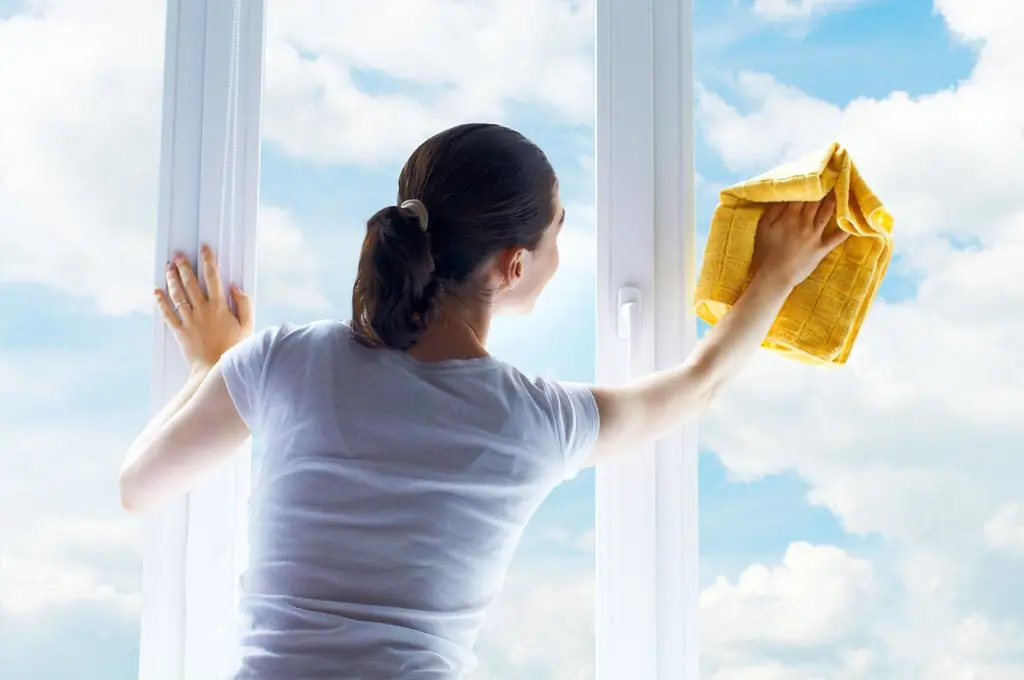
Tips for cleaning plastic windows. Tools and tools used, most common methods
How To Clean Carpet At Home From Dirt, Stains And Odor, Including Without Removing It From The Floor + Photos And Videos
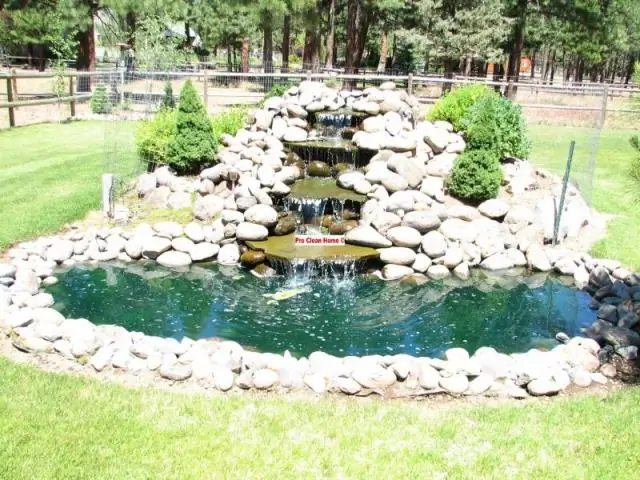
How to clean carpet depending on the type of pile and substrate. Home remedies for removing stains from the coating
How To Wash An Apple From Clothes (for Children Or Adults), How To Wash Your Hands Of This Fruit, Ways To Remove Stains From Apple Juice And Other Tips
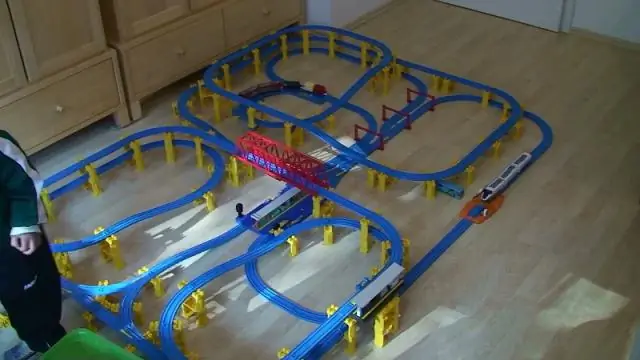
Methods for cleaning white and colored things from apple traces. Their pros and cons. How to remove old tracks. How to wash your hands after peeling apples
How To Remove Ballpoint Ink Stains From Clothing, Wallpaper, Hands, Leather, Fabric And Other Items To Remove Dirt
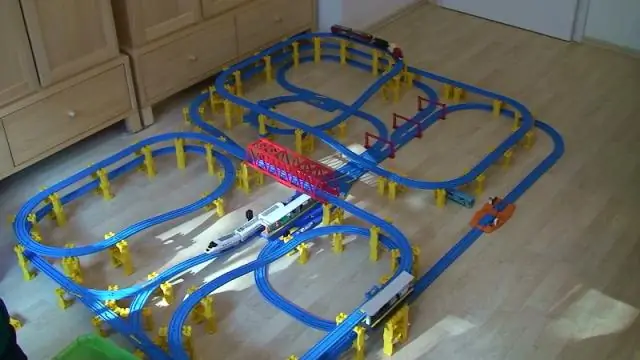
How to use home remedies to remove ink stains from ballpoint or gel pens on clothing and other surfaces
How To Get Rid Of The Smell Of Cat Urine On The Carpet At Home, How To Remove Stains, Remove Traces Of Marks, Remove Unpleasant Odors

Why cat urine smells harsh What to do if the cat wrote on the carpet. How to find and remove old stains. Folk and commercial odor removers
